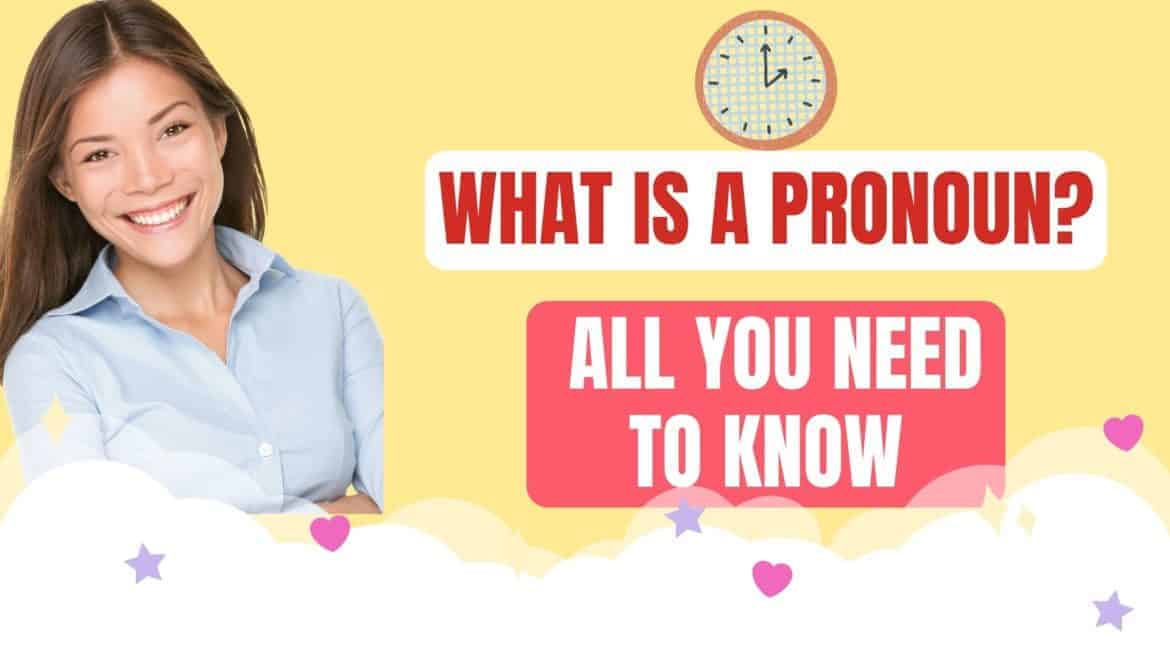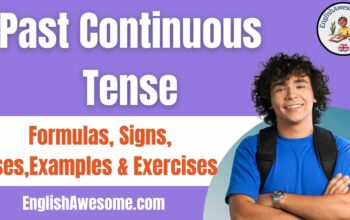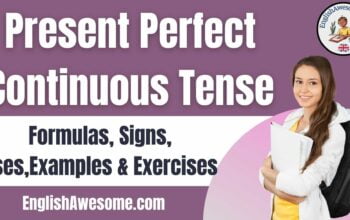Pronouns are used to replace nouns to avoid the repetition of nouns. In English, there are several types of pronouns with different functions: personal, possessive, reflexive, demonstrative, indefinite, indefinite, relational, interrogative.
⏩ Sign Up to Get Bonus
In addition, pronouns also play the role of subject, preposition, and complement in a sentence.
Let's find out the details together with English tivi!
You might also like: ALL the English Grammar Basics You Need
Pronoun Definition
A pronoun is a word used in place of a noun.
Classification and Usage of Pronouns
A. Personal Pronouns
| Subject | Object | ||
| Singular | First Person Second person Third | I you he/she/it | me you him/her/it |
| Plural | First Person Second person Third | we you they | us you them |
1. “I, you, it, he, she, we, they” can be the subject of the verb:
– They have lived here for 3 years.
2. “Me, you, him, her, us, them” can be the direct object of the verb.
– These flowers are really nice. Tom likes them
3. “Me, you, him, her, us, them” can be the indirect object of the verb.
– Kate gives some money to me.
4. “Me, you, him, her, us, them” can be the object of a preposition:
– We could do it without them.
B. Indefinite Pronouns
- Includes:
• Group associated with some: something, someone, somebody.
• Groups associated with any: anything, anyone, anybody.
• Group associated with every: everything, everyone, everybody.
• Group associated with no: nothing, no one, nobody.
• Independent group of words: all, one, none, other, another, much, less, (a) few, (a) little, enough, each, either, neither.
2. Some of the pronouns above can also be used as adjectives. They were then called indefinite adjectives. Those are the words any, some, every, no, all, one, none, other, another, much, less, (a) few, (a) little, enough, each, either, neither.
C. Possessive Pronouns
1. Includes: mine, yours, hers, his, its, ours, theirs
2. Possessive pronoun = possessive adjective + noun.
+ This is our room = this is ours.
+ You've got my pen. Where's yours?
D. Reflexive Pronouns
1. Includes: myself, yourself, yourself, yourself, yourself, ourselves, yourselves, themselves
Attention: ourselves, yourselves, themselves is the plural form.
2. Function:
2.1. As the object of a verb when the subject and object are the same person:
+ Tom and Ann blamed themselves for the accident.
2.2. Used in the above case after verb + preposition:
+ He spoke to himself.
2.3. Used as pronouns to emphasize nouns or pronouns:
+ The King himself gave her the medal.
• They often emphasize the subject of a sentence and are placed after it:
+ Ann herself opened the door.
• When they emphasize other nouns, they are placed immediately after the noun:
+ I saw Tom himself.
2.4. Used as objects after prepositions:
+ I bought it by myself.
E. Relative Pronouns
- Includes: who, whom, which, that, whose.
- Function:
2.1. Who, that, which as the subject:
+ The man who robbed has been arrested.
2.2 As the object of the verb:
+ The man whom I met told me to come back today.
2.3. Following a preposition:
+ The ladder on which I was standing began to slip.
However, prepositions can also go to the end of a clause:
+ The ladder which I was standing on began to slip.
2.4. Possessive form (whose + noun):
+ The film is about a spy whose wife betrays him.
Attention:
• when =in/on which
• where = in/at which
• why = for which
+ The day on which they arrived.
F. Demonstrative Pronouns
- Includes: this, that, these, those
2. Functions:
2.1. The demonstrative adjectives “this, that” and their plural “these, those” are used before a noun to determine its position in relation to the speaker.
When these adjectives are used alone, without a noun, they become demonstrative pronouns.
2.2. In addition to replacing a noun, demonstrative pronouns also give listeners a concept of closer or further away in time or distance.
+ Could you give me that book, please?
G. Interrogative Pronouns
- Includes: who, whom, whose, what, which
2. Function:
2.1. As a subject:
+ Who keeps the keys
2.2. As the object of the verb
+ Who did you see?
You might also like: Pronouns – Parts Of Speech – Pronouns English Grammar
Pronoun Exercises with Answers
Question 1: She cooks for_______every day.
A. myself
B. herself
C. himself
Question 2: (Sue and Simon) _______ are twins.
A. We
B. They
C. It
Question 3: My mother _______
A. She
B. He
C. It
Question 4: We want to see Peggy and _______ (she) family next winter.
A. their
B. her
C. his
Question 5: My uncle works in a factory. _______ says _______ is a noisy place.
A. he/ him
B. her/ it
C. he/ it
Question 6: You must learn your lesson _______ . Nobody can do it for you.
A. herself
B. himself
C. yourself
Question 7: The teacher said to the class, “When _______ finish your work, please pass _______ up to me.”
A. you/ him
B. you/ it
C. he/ it
Question 8: James goes and hides _______ behind the curtain.
A. herself
B. himself
C. yourself
Question 9: The window _______ .
A. They
B. She
C. It
D. He
Question 10: Please don’t tell _______ about .
A. her/ me
B. her/ I
C. She/ I
Question 11: _______ books are here. _______ are there.
A. Ours/ Their
B. Their/ Ours
Question 12: They are our pencils. ==>
A. They are theirs.
B. They are ours.
C. They are yours.
Question 13: I don’t like _______ new boyfriend of yours
A. that
B. those
Question 14: books belong to him.
A. These
B. This
Question 15: We would like to buy a house _______overlooks West lake.
A. who
B. whose
C. where
D. which
Question 16: I don’t believe the story _______ she told me.
A. that
B. who
C. whom
Question 17: Ann, _______father is my teacher, is very beautiful.
A. who
B. whom
C. whose
Question 18: Peter comes from Witney, _______is near Oxford.
A. that
B. which
C. who
Question 19: color would you like?
A. Why
B. What
C. How
Question 20: car did you drive here?
A. When
B. Who
C. Whose
D. Why
Answer:
| 1. B | 2. B | 3. A | 4. B | 5. C | 6. C | 7. B | 8. B | 9. C | 10. A |
| 11. B | 12. B | 13. A | 14. A | 15. D | 16. A | 17. C | 18. B | 19. B | 20. C |
Read more: English Grammar
Download File: Pronoun Exercises with Answers PDF



Conclusion
You have learned all about What is a Pronoun? All you Need to Know in English grammar. Be proactive in doing exercises to get the best results.
Subscribe to the English TV channel on Youtube to improve your English skills!





